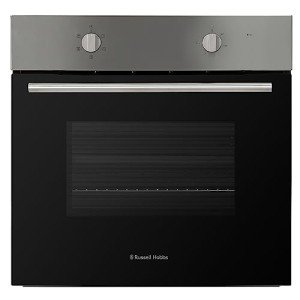The Rise of Built-In Ovens: A Seamless Approach to Modern Cooking
In modern kitchens, where style looks mix perfectly with functionality, one home appliance sticks out as a true game changer: the built-in oven. As house owners and chefs alike continue to look for innovative options that enhance their cooking experience, built-in ovens have actually become significantly popular. This post explores the advantages, factors to consider, and patterns surrounding built-in ovens, highlighting why they are an essential feature in modern-day cooking spaces.
What is a Built-In Oven?
A built-in oven is a kitchen home appliance developed to be integrated into the cabinets of a cooking area rather than standing alone. Unlike conventional freestanding ovens, which can be moved and positioned anywhere, built-in ovens come in various styles and sizes to fit specifically within designated areas. Readily available in single or double configurations, these ovens offer a streamlined appearance that matches contemporary kitchen area styles.
Benefits of Built-In Ovens
1. Space-Saving Design
Among the most appealing benefits of built-in ovens is their space-saving design. By incorporating the oven into cabinets, you can release up valuable counter and floor space. This is especially beneficial in smaller cooking areas, where maximizing room is important. Built-in ovens can be installed at eye level, making them more available and decreasing the requirement to flex down.
2. Aesthetic Appeal

Built-in ovens add to a streamlined and cohesive kitchen design. Available in various finishes-- such as stainless steel, black, white, and custom-made cabinets-- they can mix perfectly into the overall decoration. This visual appeal enhances the kitchen area's visual consistency and raises the space, developing a modern-day and advanced environment.
3. Improved Functionality
Lots of built-in ovens come geared up with sophisticated cooking technologies, such as convection cooking, steam ovens, and wise features. These improvements permit flexible cooking alternatives, making it easier to accomplish professional-level results in the house. Built in ovens electric built-in ovens can even link to Wi-Fi, enabling users to control the oven remotely, get alerts, and access a variety of cooking programs and recipes.
4. Improved Ventilation
Since built-in ovens can be integrated with kitchen hoods and ventilation systems, they can help preserve much better air quality and decrease cooking odors. This is particularly significant for those who enjoy to prepare with fragrant spices and components, as a reliable ventilation system can keep the kitchen comfy and inviting.
5. Modification Options
Built-in ovens use a large range of modification choices to match individual cooking designs and requirements. From professional-grade devices with multiple cooking modes to compact styles for smaller kitchen areas, property owners can pick the oven that fits their particular requirements. Many producers likewise use customizable front panels, enabling you to match the oven's appearance to your cabinets for a genuinely merged appearance.
Considerations When Choosing a Built-In Oven
While built-in ovens have many benefits, there are necessary considerations to keep in mind before buying:
1. Cost
Built-in ovens normally include a higher price than their freestanding equivalents due to their style and installation requirements. It's crucial to aspect in both the expense of the oven and any extra expenses connected to kitchen cabinetry modifications or installation.
2. Installation Requirements
Installing a built-in oven frequently needs professional help, specifically if you require to customize existing cabinets. Make sure that you consider any costs related to installation, consisting of labor and possible cabinets changes.
3. Size and Dimensions
Before acquiring a built-in oven, determine the designated space precisely to guarantee an appropriate fit. Built-in ovens can be found in various sizes and setups, so selecting one that lines up with your requirements and kitchen area design is vital.
4. Lifestyle and Usage
Consider your cooking routines and needs when selecting a built-in oven. If you often host big gatherings, a double oven might be more useful. On the other hand, if you have a compact kitchen area, a single-wall oven might be sufficient.
Patterns in Built-In Ovens
The kitchen device market is continually developing, and built-in ovens are not exempt from emerging trends. Some current patterns consist of:
Smart Technology Integration: With the increase of smart home innovation, built-in ovens now typically feature connectivity options. This allows users to monitor cooking progress and adjust settings by means of mobile apps.
Energy Efficiency: As sustainability becomes a top priority, many producers are investing in energy-efficient built-in ovens that minimize energy intake while preserving performance.
Multi-functional Designs: Built-in ovens now use features such as air frying, slow cooking, and steaming, offering flexibility that satisfies a broad range of cooking methods.
Conclusion
Built-in ovens undoubtedly represent a best blend of style, function, and benefit in today's kitchens. As more property owners choose this contemporary solution, the focus moves to developing a cooking area that is as visually pleasing as it is practical. Whether you are constructing a new home or redesigning your cooking area, thinking about a built-in oven might raise your culinary experience and transform your cooking area into a stylish and practical sanctuary. With a selection of options readily available and continuous developments in innovation, built-in ovens remain a standout choice for both novice cooks and culinary enthusiasts alike.
